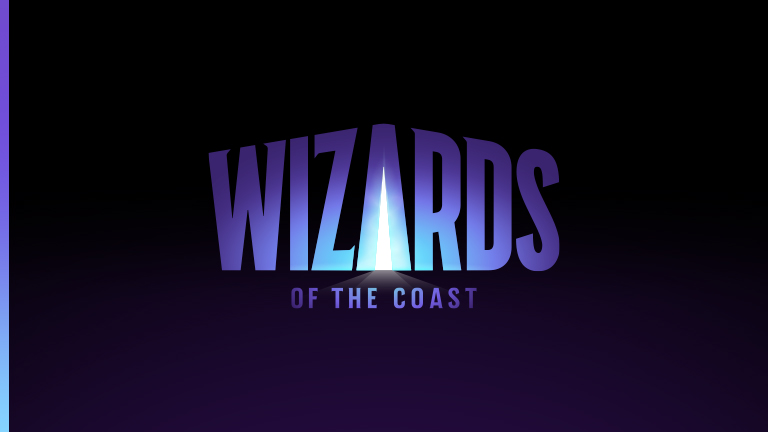Hello, everybody! This is Gavin Verhey on behalf of the Commander Format Panel. If you don’t know what that is, you can read this article.
Today, I’m coming to you all to share what we’ve been talking about recently and share some updates to the Commander Brackets system and Game Changers list based on hearing your feedback and watching how it’s played out over the past year.
In September, we had a new event that was like nothing done before: the Commander Summit. We invited the entire Commander Format Panel to the Renton office for three days of discussions, meetings, and in-person talks about our ongoing work. Here are many of us from during that time:
It was a great opportunity to discuss a lot of what we had been seeing in person and really hash out a lot of the details of what we’d like to do going forward with Commander Brackets and more. We also discussed several other topics. I want to get to the bracket changes first; after that, I’ll tell you about some things we’ve been discussing and would love to hear your opinions on, so please read through and let us know.
Let’s kick things off with brackets. (And if you want a recap of the bracket system, please click here.)
Reviewing Brackets
After three MagicCons and nine months of use, I would call Commander Brackets a success. They’re not without failings, but we’ve seen the data from MagicCon surveys that shows they have been incredibly helpful at finding games. Anecdotally, we see people talking about them when looking for games all the time. Whether players are talking about the Game Changers they’re playing, describing decks with the five brackets, or more, it has created more pregame conversations than we’ve ever seen, which is the real goal here.
That said, there are things to clean up and improve.
The first, and we’ve talked about this before, is the lack of focus on intent. So much about the brackets is about what you’re intending to do. I can easily build a deck which technically fits the restrictions of Bracket 2 but can play at a very high power level. We’re going to continue to emphasize that today with expectations of what you can find in each bracket as a North Star.
We have also had some rules and heuristics that were not as clear as they should have been. Things like “no early-game combos” or “few” tutors. While not everything can be a hard-and-fast rule, we can certainly do better.
The third is that, while our goal is certainly not to have an equal number of people in each bracket, some of how we directed people squished too many people into Upgraded, or Bracket 3. Today, we’re going to update some terminology that we think will help and help people find a bracket for them. We still expect Brackets 2, 3, and 4 to be the most popular, but this will hopefully help distinguish them some more.
And finally, we’ve done some tweaking of the Game Changers list and updated some of our philosophy. We started with probably too few cards, then did an update adding a ton of cards, and we went a little overboard—we needed to circle back on our goals. Today, we’ll have some updated thoughts around that and change some cards on the Game Changers list.
Let’s go through how we’d like to update each of these. Nothing here is a huge change from what you already know. Think of this as a list of patch notes rather than a sweeping change to the system.
Setting Bracket Expectations and Turns Played
Something we’ve heard from the community is that they would love better guidelines of what we expect from each bracket. So today, we wanted to walk you through our general framework and expectations of what we intend for each bracket.
This isn’t something where if your deck violates these expectations one time it’s immediately out of the bracket. Part of the fun of Commander involves unusual cards and the combinations of cards that can happen. But, generally, this is what you should expect from the different brackets.
There are two pieces to this. The first involves expectations around the game, mainly focused on deck contents, types of win conditions, and gameplay. This is more descriptive and soft while still painting a nice picture of what to expect.
The second is a little harder line, and that’s how many turns you can generally expect to play before you can win or lose. That’s not to say the game always ends for you on those turns, but that if the game ended then, you would be satisfied with that experience. We heard from a lot of people that length of game is an important factor for them. So, for example, when Bracket 3 says “you should expect to be able to play at least six turns before you win or lose,” that means that someone’s seventh turn is when you would be satisfied if the game ended.
Our hope is this also makes things a lot clearer in terms of big game-ending cards and combos, explaining where they should show up. For example, instead of wondering what “no early-game combos” means, saying “you don’t expect to win or lose before turn six” gives you a pretty clear indicator of what kind of combos could be allowed: not ones that tend to happen in the first six turns. That doesn’t mean you should just wait and hold your two-card infinite until later either. If a combo could frequently come up, it’s not the best fit for that bracket.
We’ve heard from some of you that you have trouble figuring out what bracket to play in. Here are our general thoughts:
Bracket 1: Exhibition
Players expect:
- Decks to prioritize a goal, theme, or idea over power
- Rules around card legality or viable commanders to have some flexibility depending on the pod
- Win conditions to be highly thematic or substandard
- Gameplay to be an opportunity to show off your creations
Generally, you should expect to be able to play at least nine turns before you win or lose. Most importantly, given this bracket’s emphasis on theme, players should feel like they have the time to showcase their decks.
Bracket 2: Core
Players expect:
- Decks to be unoptimized and straightforward, with some cards chosen to maximize creativity and/or entertainment
- Win conditions to be incremental, telegraphed on the board, and disruptable
- Gameplay to be low pressure with an emphasis on social interaction
- Gameplay to be proactive and considerate, letting each deck showcase its plan
Generally, you should expect to be able to play at least eight turns before you win or lose.
Bracket 3: Upgraded
Players expect:
- Decks to be powered up with strong synergy and high card quality; they can effectively disrupt opponents
- Game Changers that are likely to be value engines and game-ending spells
- Win conditions that can be deployed in one big turn from hand, usually because of steadily accrued resources
- Gameplay to feature many proactive and reactive plays
Generally, you should expect to be able to play at least six turns before you win or lose.
Bracket 4: Optimized
Players expect:
- Decks not to adhere to the cEDH metagame reserved for Bracket 5
- Decks to be lethal, consistent, and fast, designed to take people down as fast as possible
- Game Changers that are likely to be fast mana, snowballing resource engines, free disruption, and tutors
- Win conditions to vary but be efficient and instantaneous
- Gameplay to be explosive and powerful, featuring huge threats and efficient disruption to match
Generally, you should expect to be able to play at least four turns before you win or lose.
Bracket 5: cEDH
Players expect:
- Decks that are meticulously designed to battle in the cEDH metagame, with the ability to win quickly or generate overwhelming resources; often built using existing cEDH knowledge, tools, and/or decklists
- Win conditions to be optimized for efficiency and consistency
- Gameplay to be intricate and advanced, with razor-thin margins for error; players prioritize victory over all else
These games could end on any turn.
We are hopeful that by rolling this into what people can expect in each bracket, it will help set expectations at each level.
Exhibition (Bracket 1) Update: Focus on Theme
Hand in hand with this, and you saw a little of this above, we really want to double down on Exhibition’s intent being all about theme over function.
While rule zero—the ability to allow things with a pregame discussion—is always active for people at all bracket levels (other than cEDH), we want to loudly emphasize that here.
Do you have a really unusual theme that needs an atypical commander, like a playtest card or card from an Un– set? Do you want to use some Game Changers that are highly thematic for your deck, for example,
These kinds of highly themed decks are a blast to play and are what make Commander fun for so many people.
A deck is not Bracket 1 based on power level alone. It’s really about the gameplay experience and trying to engender highly thematic gameplay. We encourage you to give it a try and build your own thematic and unique deck!
Core (Bracket 2) Update: No Longer Tied to Precons
When we announced brackets, we said Core was about what you could expect from an average preconstructed Commander deck.
While the goal of tying a bracket level to something that people recognized was noble, it came with two challenges.
First, preconstructed Commander decks have a range of power levels. A Modern Horizons 3 Commander deck or Secret Lair Commander deck isn’t the same as a Starter Commander Deck product. There were plenty of holes in this description where some precons, as they stand, didn’t necessarily follow the model set forth, which just increased confusion.
The second is that people’s expectations around precons and what’s in them is so varied. Decks from five years ago are so different to today.
Core is still a great landing point for people, but that doesn’t have to be tied to precons. So, we want to remove this going forward now that we have better language to communicate the kind of experience we want at Core.
Removing Tutor Restrictions
Tutors increase consistency and risk homogeneity by making games play out the same. When we were building the original bracket system, we put in guiderails around tutors at the first three brackets—citing “few” tutors.
That original benchmark wasn’t clear enough, and not all Tutors are created equal. Sure,
So, after much discussion, the avenue we’d like to take is to remove the tutor restrictions from Commander Brackets entirely and rely on Game Changers to catch the most efficient tutors. If you want to play tons of inefficient tutors, it may not make for the most replayable deck, but we don’t need a safeguard for that. One of the biggest risks with tutors is enabling combos, but with no game-ending combos at the lower brackets and turn restrictions listed in each bracket’s intent, it helps curb those issues.
Game Changers List Philosophy
When we last talked, we added a bunch of Game Changers based on community feedback. While many of those were good additions, we swung the pendulum a little too far in the direction of too many Game Changers. Every additional Game Changer is one more thing people have to track. And one thing it really made clear is that we needed some better philosophy around what makes a Game Changer.
Game Changers should generally be cards that easily and dramatically warp Commander games, allowing players to run away with resources, shift games in ways that many players find unpleasant, block people from playing, efficiently search for any of their strongest cards without downside, or have commanders that are highly unfun in casual games. Here are two things we generally want to get away from for Game Changers:
- High-mana value cards. If you’re spending tons of mana on something in Commander, it’s going to be strong. We want to keep the focus on cards that can change the game in the earlier turns, where it can be most frustrating to have somebody run away with the game before people have been able to develop.
- Legends that are just powerful commanders. The easiest thing to opt out of is someone’s commander. If someone says, “I want to play
Yuriko ,” you know exactly what that means and it’s easy to prompt a conversation. If something is also wildly powerful in the 99, or simply unfun all around, we’re fine leaving it on the list, but power alone isn’t a reason to list it as a Game Changer.
Removals
With all of that in mind, here are some cards we want to remove today:
High Mana Value
Expropriate Jin-Gitaxias, Core Augur Sway of the Stars Vorinclex, Voice of Hunger
Legends That Are Strongest in the Command Zone
Kinnan, Bonder Prodigy Urza, Lord High Artificer Winota, Joiner of Forces Yuriko, the Tiger’s Shadow
Finally, while they don’t really fit into any of these categories, we would like to remove
Deflecting Swat Food Chain
For
We also want to recognize that we’re removing a lot of cards from the list all at once, and that major shifts to these lists can greatly impact your decks. We’re correcting for some changes in our philosophy here, but it’s our hope that in the future, changes to the Game Changers list will be in the order of a few cards rather than ten. It’s important to us that you can begin to feel stable in learning what’s on the list.
Cards That Stayed
Here are some cards that remained on the list and are worth mentioning:
Updated Game Changers
Putting this all together, here’s the updated Game Changers list:
Drannith Magistrate
Humility
Serra’s Sanctum
Smothering Tithe
Enlightened Tutor
Teferi’s Protection
Consecrated Sphinx
Cyclonic Rift
Force of Will
Fierce Guardianship
Gifts Ungiven
Intuition
Mystical Tutor
Narset, Parter of Veils
Rhystic Study
Thassa’s Oracle
Ad Nauseam
Bolas’s Citadel
Braids, Cabal Minion
Demonic Tutor
Imperial Seal
Necropotence
Opposition Agent
Orcish Bowmasters
Tergrid, God of Fright
Vampiric Tutor
Gamble
Jeska’s Will
Underworld Breach
Crop Rotation
Gaea’s Cradle
Natural Order
Seedborn Muse
Survival of the Fittest
Worldly Tutor
Aura Shards
Coalition Victory
Grand Arbiter Augustin IV
Notion Thief
Ancient Tomb
Chrome Mox
Field of the Dead
Glacial Chasm
Grim Monolith
Lion’s Eye Diamond
Mana Vault
Mishra’s Workshop
Mox Diamond
Panoptic Mirror
The One Ring
The Tabernacle at Pendrell Vale
Additionally, Commander Format Panel member Rachel Weeks has created a handy graphic to illustrate the changes to the Commander Brackets system. You can see it here.
There’s one other thing to call out. We’ve heard from several people it would be great to have a place where this information lives that is not hidden in a long article like this one. While we are still waiting to drop the beta tag, you can find this information easily using the following links, noting these pages may not reflect the latest changes described here but will soon:
Commander Summit Discussion Topics
During the Commander Summit, we discussed several things we could look at changing about the format in the future. Today, I want to mention some of them to you to solicit feedback. There are four main things today.
The first is
This is a very iconic Commander card. “Do you pay the one?” is baked into so many references around the format. It’s one of the most snowbally card-advantage engines in all of Commander. Many casual games where it’s played let the Rhystic player run away with the game as people just cast spells into it. At higher bracket play, like cEDH, it causes huge issues.
However, as far as we can tell, it’s loved by many. It’s not quite as iconic to the format as
Is Commander more fun with
The second is
This card is pervasive in the highest brackets of Commander as a way to instantaneously win the game alongside something like
But one thing we don’t have great visibility into is how often it’s showing up at more casual tables. In your Bracket 3 or unbracketed casual games, are a lot of them ending with
We’d generally like to avoid banning cards and let the Game Changers list be the tool in our toolbelt. But these are common enough discussion topics and impactful enough that we’d love to hear from you on them.
The third thing we discussed a lot is if there should be another bracket.
We significantly discussed the idea of placing a bracket between Brackets 2 and 3 or Brackets 3 and 4 as they currently sit to create for a little more granularity.
We ultimately wanted to see how today’s changes impacted brackets before adding an additional one. The cost also isn’t zero, as people have to learn new nomenclature. This is something we’d love to hear from you. Would you use an additional bracket? Let us know!
The fourth and final thing we’d love feedback on is something entirely different: hybrid mana costs.
In Magic, hybrid cards are made to be playable by either color. That’s how they work in all of Magic: if I have a
Allowing hybrid would give decks with fewer colors better tools and options to play. It allows for more playable options.
From a design standpoint, the way we design hybrid cards today is that it would need to be a card we’d print in another color. They must obey the rules of a white card and a green card independently, and they are often weaker than a monocolor card in either color.
The proposal would be that, strictly for the purposes of deck building, you can treat a hybrid symbol as either of its two colors. So,
When it comes to twobrid mana costs like that of
We know that hybrid mana costs have been a long-discussed thing in Commander. What do you all think?
We’ll be reading all the discourse in the community around these four questions on social media—and we’ll especially be collecting things on the official Magic Discord, so go check that out.
Commanding Into 2026
We’ll be back early next year, by the end of February, with another check-in. We’ll see about any further bracket updates, and perhaps where we landed on some of the above questions, then. We said there will be no bans or unbans for the remainder of this year, but we will be evaluating everything heading into next year.
You will also hear from us earlier, as we come up to the yearly panel rotation. This is the first time this will have happened, but as I said last year when I announced the panel, some people will rotate off the panel as some new folks rotate on, and the overall group will become smaller. We wanted to make sure to have as many eyes as possible and keep consistency during this transition. Originally, I said that would be up by early November. It will likely be a little later now, but you can still expect to hear about it in the next couple months.
In general: Commander is great. We don’t want to make tons of changes. The Commander Bracket system is mostly working well, and people are having fun. Thanks to all of you for all the hours you put into this wonderful format!
We’ll talk with you all again soon.
On behalf of the whole Commander Format Panel,
Attack on Cardboard
Bandit
Ben Wheeler
Charlotte Sable
DeQuan Watson
Deco
Greg Sablan
Ittetu
Josh Lee Kwai
Kristen Gregory
Lua Stardust
Olivia Gobert-Hicks
Rachel Weeks
Rebell Lily
Scott Larabee
Tim Willoughby
Toby Elliott
First Appeared on
Source link













